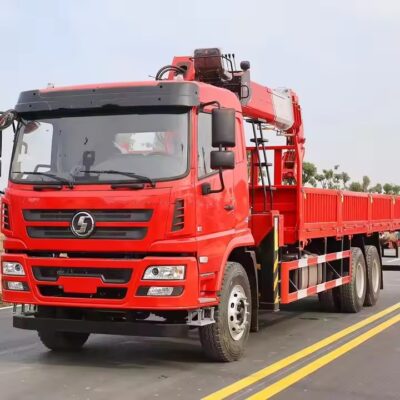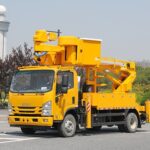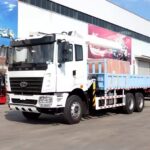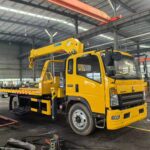の トラック搭載クレーン is a special vehicle model that holds a crucial position in various industries due to its unique capabilities. With the growing demands of social development, トラック搭載クレーンs have gained significant popularity in the special vehicle market. しかし, operating these powerful machines requires a certain level of professional skill and adherence to numerous rules. Only by following these guidelines can トラック搭載クレーンs be operated effectively and bring more objective benefits. トラック搭載クレーン drivers must strictly observe the following safety operations:
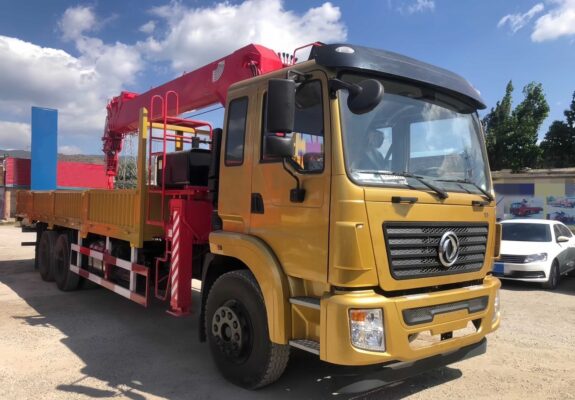
- Qualifications and Responsibilities:
The driver of a トラック搭載クレーン must undergo professional training and pass the assessment of relevant departments to obtain both a motor vehicle driver’s license and a special operation certificate for lifting machinery operations. This dual certification ensures that the driver has the necessary knowledge and skills to handle the complex tasks associated with operating a トラック搭載クレーン.
Just like other vehicles, の トラック搭載クレーン must abide by traffic rules. Drunk driving is an absolute taboo as it poses a severe threat to the safety of the driver, passengers, and others on the road. さらに, the truck-mounted crane cannot be operated when the driver is unwell. Operating a vehicle while in an unfit state can lead to reduced concentration, slower reaction times, and an increased risk of accidents.
例えば, imagine a driver who attempts to operate a トラック搭載クレーン after a night of heavy drinking. The impaired judgment and coordination can result in disastrous consequences, not only endangering the driver’s life but also potentially causing damage to property and harming innocent bystanders. 同様に, if a driver is suffering from a severe headache or illness that affects their ability to focus, operating the crane can be extremely dangerous.
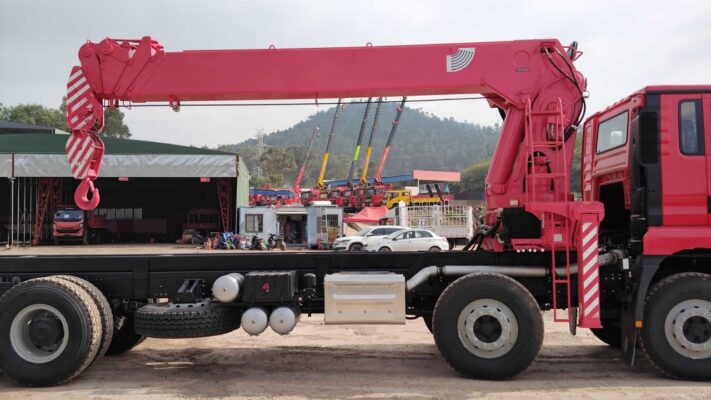
- Maintenance and Inspection:
の トラック搭載クレーン driver should maintain and service the vehicle in a timely manner according to the manufacturer’s regulations. Regular maintenance is essential to keep the crane in good working condition and ensure its safety and reliability. This includes tasks such as checking and changing fluids, inspecting tires, and ensuring that all mechanical components are functioning properly.
In addition to routine maintenance, regular inspections should be conducted to identify any potential issues before they become major problems. This can involve checking the condition of the boom, hooks, outriggers, hydraulic systems, and other critical parts of the crane. By detecting and addressing problems early on, the driver can prevent breakdowns and accidents.
例えば, if a hydraulic hose is showing signs of wear during an inspection, it can be replaced before it ruptures and causes a dangerous situation. Regular inspections also help to extend the lifespan of the crane and reduce the overall cost of ownership.
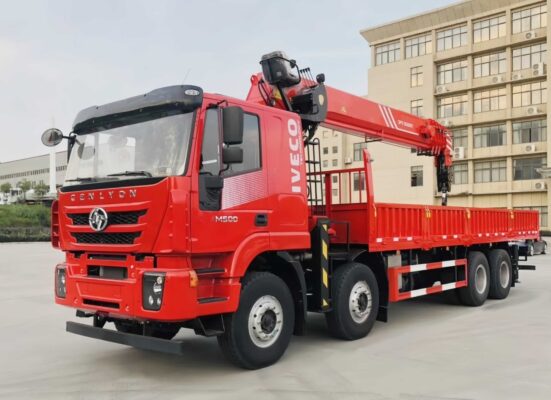
- Adherence to Lifting Capacity and Operating Radius:
Operations must be carried out in accordance with the lifting capacity and operating radius specified in the lifting characteristic table. Overloading the crane is strictly prohibited as it can lead to structural failure, instability, and accidents. The lifting capacity and operating radius are determined based on the design and capabilities of the crane, taking into account factors such as the strength of the boom, stability of the vehicle, and safety margins.
例えば, もし トラック搭載クレーン is rated to lift a maximum of 10 トン, attempting to lift a heavier load can cause the boom to buckle, the outriggers to sink, or the vehicle to tip over. By strictly adhering to the specified lifting capacity and operating radius, the driver can ensure the safety of the operation and prevent damage to the crane and surrounding objects.
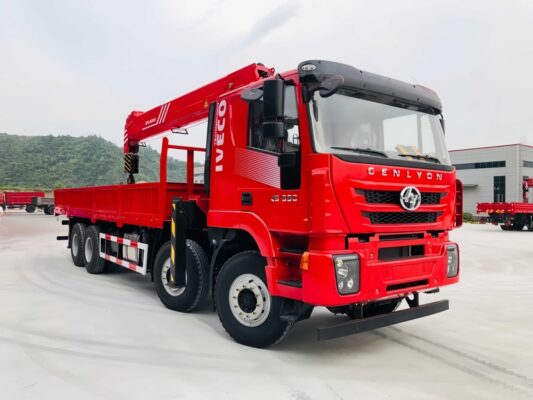
- Parking and Ground Conditions:
The ground where the トラック搭載クレーン is parked should be flat and solid. Parking on uneven or soft ground can lead to instability and potential accidents. A safe distance should be maintained from ditches and foundation pits to prevent the crane from tipping over or sliding into these hazards.
例えば, if a crane is parked too close to a ditch, the weight of the crane and the load being lifted can cause the ground to collapse, resulting in the crane tipping over. By choosing a suitable parking location and maintaining a safe distance from potential hazards, the driver can reduce the risk of accidents.
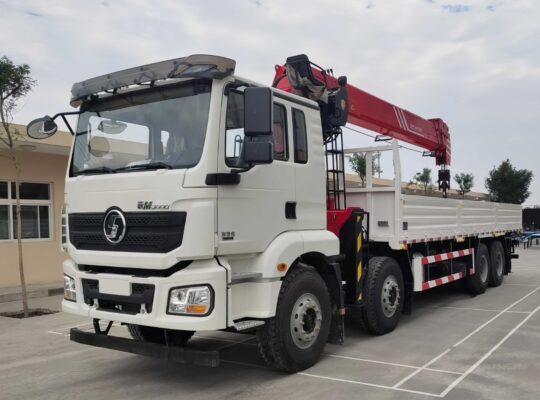
- Driving Precautions:
Before driving, the boom, hook, and outriggers must be retracted to ensure safe driving. Maintaining medium-speed driving is recommended to allow for better control and reaction time. Avoiding emergency braking is crucial as it can cause the load to shift and potentially damage the crane or cause an accident.
When passing through railway crossings and uneven roads, the driver must slow down to prevent excessive vibrations and shocks to the crane and its components. Do not coast in neutral when going downhill as this can reduce the driver’s control over the vehicle and increase the risk of brake failure. When reversing, there must be someone monitoring to ensure that there are no obstacles and that the operation is carried out safely.
冬には, anti-skid measures should be taken to prevent the vehicle from slipping on icy or snowy roads. This can include using snow chains, adjusting tire pressure, and driving with caution.
例えば, if a driver fails to retract the boom and hook before driving, they may hit overhead obstacles such as power lines or bridges, causing serious damage and potential safety hazards. By following these driving precautions, the driver can ensure the safety of the vehicle and its occupants during transit.
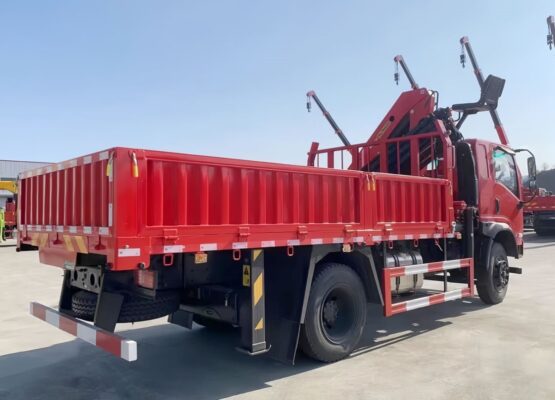
- Outrigger Deployment:
Before operation, all the outriggers of the トラック搭載クレーン should be fully extended. This provides a stable base for the crane and distributes the weight evenly, reducing the risk of tipping over. For soft or insufficiently pressure-resistant ground, wooden sleepers must be placed under the outrigger feet to increase stability.
The outriggers should be adjusted to make the body meet the horizontal requirements. This ensures that the crane is level and stable during operation, reducing the risk of accidents caused by uneven weight distribution.
例えば, if the outriggers are not fully extended or properly adjusted on soft ground, the crane may sink or tilt when lifting a heavy load, leading to a dangerous situation. By following these procedures, the driver can ensure the stability and safety of the crane during operation.
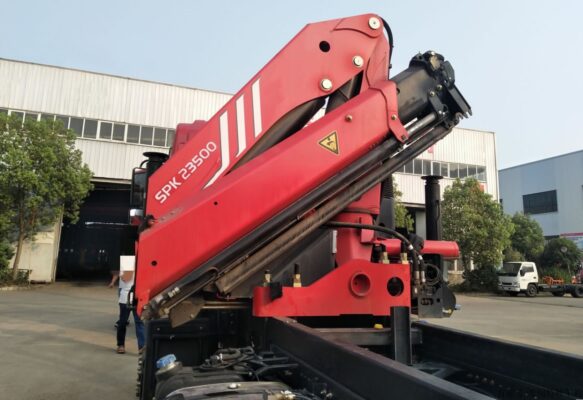
- Outrigger Adjustment and Operation:
Adjusting the outriggers must be carried out without load. Retract the extended boom before adjusting the outriggers to prevent damage to the boom and hydraulic systems. 動作中, it is strictly prohibited to operate the outrigger control valve as this can cause instability and potential accidents.
例えば, if the outrigger control valve is accidentally activated during operation, it can cause the outriggers to move unexpectedly, leading to a loss of stability and potentially tipping over the crane. これらのガイドラインに従うことで、, the driver can ensure the safe operation of the outriggers and prevent accidents.
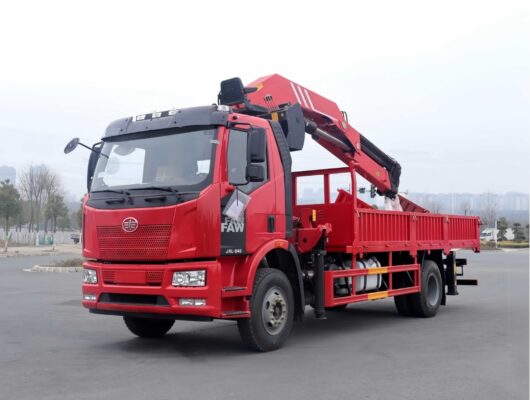
- Pre-Operation Checks:
Before the トラック搭載クレーン performs lifting work, it must be checked whether all parts of the crane are complete and in good condition and meet safety regulations. This includes inspecting the boom, hooks, cables, hydraulic systems, brakes, and other components for signs of damage or wear.
After the トラック搭載クレーン is started, it should run without load first to check whether all operating devices, brakes, hydraulic devices, and safety devices are working normally and are sensitive and reliable. It is strictly prohibited to operate with faulty machinery as this can lead to accidents and damage to the crane.
Before operation, pay attention to whether there are any obstacles within the slewing range of the crane to prevent collisions and damage.
例えば, if a brake is not functioning properly, it can cause the crane to move unexpectedly during lifting, increasing the risk of accidents. By conducting thorough pre-operation checks, the driver can ensure the safety and reliability of the crane before starting work.
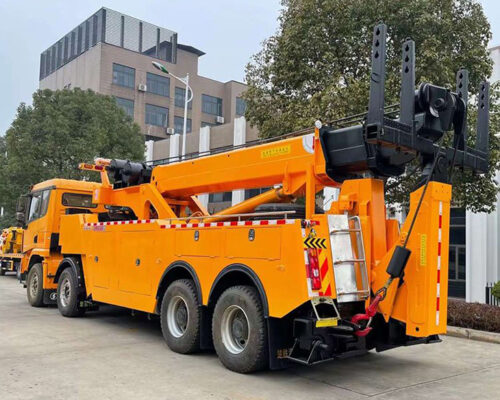
- Soft Ground Testing:
When the site is relatively soft, a test lift must be carried out to check whether each outrigger of the crane is soft or sunken. This helps to determine if the ground can support the weight of the crane and the load being lifted. Only when it is confirmed to be normal can the lifting continue.
例えば, if the outriggers sink into the soft ground during the test lift, additional measures such as placing more wooden sleepers or using a different location must be taken to ensure stability. By performing this test, the driver can prevent accidents caused by unstable ground conditions.
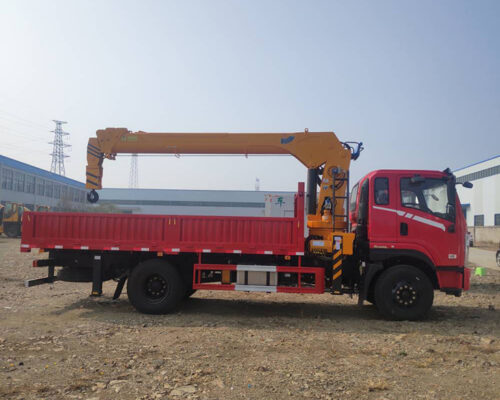
- Lifting Heavier Objects:
When lifting heavier objects, the heavy object should be lifted about 10CM off the ground first, and check whether the stability of the crane and the brakes are flexible and effective. This allows the driver to assess the stability of the crane and ensure that the brakes can hold the load. Only when it is confirmed to be normal can the lifting continue.
例えば, if the brakes are not strong enough to hold the weight of the load, it can lead to a dangerous situation where the load drops suddenly. By following this procedure, the driver can ensure the safety of the lifting operation.
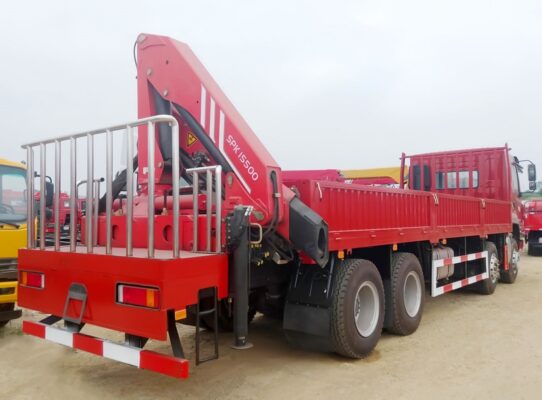
- Full Load and Multiple Operations:
とき トラック搭載クレーン is lifting at full load or close to full load, it is prohibited to perform two or more operation actions at the same time. This can cause excessive stress on the crane’s components and increase the risk of accidents. The rotation angle of the boom cannot exceed 45 degrees to maintain stability.
Oblique lifting, pulling lifting, and rapid lifting and lowering are strictly prohibited as they can lead to instability and damage to the crane. It is also strictly prohibited to extend the boom with heavy load as this can cause structural failure.
例えば, if the boom is rotated too far or if multiple operations are performed simultaneously, it can put excessive stress on the hydraulic systems and structural components, leading to a potential failure. By following these restrictions, the driver can ensure the safe operation of the crane under full load conditions.
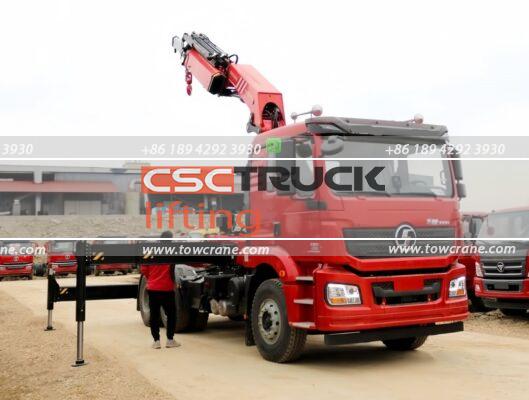
- Night Operations:
When using the トラック搭載クレーン at night, there must be sufficient lighting equipment and unobstructed lifting passages at the work site. This ensures that the driver can see clearly and operate safely. A certain safe distance should be maintained from nearby equipment and buildings so that there will be no collision during operation.
例えば, if the work site is poorly lit, it can be difficult for the driver to see obstacles and perform the lifting operation safely. By providing adequate lighting and maintaining a safe distance, the driver can reduce the risk of accidents during night operations.
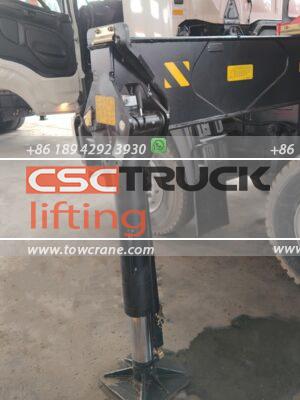
- Lifting Speed and Emergency Operations:
The lifting operation of the トラック搭載クレーン should be carried out slowly and evenly. This allows for better control and reduces the risk of accidents caused by sudden movements. Only under special circumstances can emergency operations be carried out, and even then, extreme caution must be exercised.
例えば, if a load needs to be quickly moved in an emergency situation, the driver must carefully assess the risks and take appropriate measures to ensure safety. By following the principle of slow and steady lifting, the driver can minimize the potential for accidents.
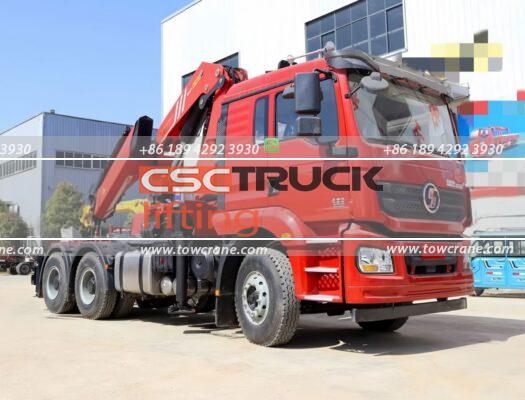
- Avoiding Cab Passing and Operating Area Safety:
とき トラック搭載クレーン is performing lifting operations, the lifted object should try to avoid passing above the cab as much as possible. This reduces the risk of damage to the cab and potential injury to the driver. No one is allowed to stand, work, or pass under the operating area, under the boom, under the hook, and under the lifted object to prevent accidents caused by falling objects.
例えば, if someone stands under the lifted object and the load drops suddenly, it can result in serious injury or even death. By enforcing these safety rules, the driver can ensure the safety of everyone on the work site.
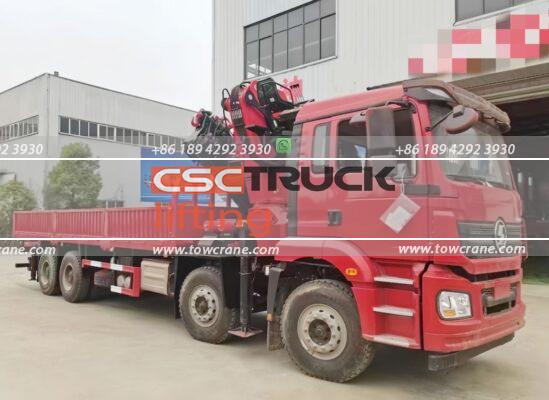
- Distance from Live Power Lines:
とき トラック搭載クレーン is working near a live power line, a certain safe distance must be maintained from the live power line. Within the maximum slewing radius, the minimum allowable distance to the transmission line is specified in a table. The safety distance should be appropriately increased when working in foggy weather due to reduced visibility.
例えば, if the crane comes too close to a live power line, it can cause an electrical shock or even a fire. By maintaining a safe distance, the driver can prevent accidents and protect the lives and property of everyone on the work site.

- Hook and Pulley Distance:
とき トラック搭載クレーン is performing lifting operations, a certain distance must be maintained between the hook and the pulley to prevent the winch from over-limiting and breaking the steel wire rope or tipping over the boom.
例えば, if the hook is too close to the pulley, it can cause excessive stress on the wire rope and increase the risk of failure. By maintaining an appropriate distance, the driver can ensure the safety of the lifting operation.
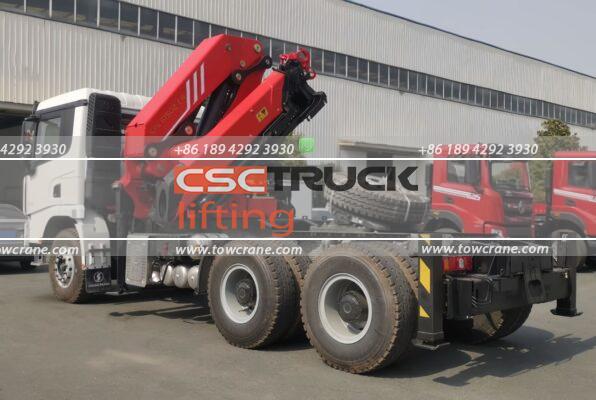
- No Maintenance or Unauthorized Entry:
とき トラック搭載クレーン is performing lifting operations, it is not allowed to overhaul and adjust the machine parts. This can cause distractions and increase the risk of accidents. Unauthorized personnel are strictly prohibited from entering the cab as they may interfere with the operation or cause distractions to the driver.
例えば, if a mechanic attempts to perform maintenance while the crane is in operation, it can lead to a dangerous situation. By enforcing these rules, the driver can ensure the safety of the operation and prevent accidents.
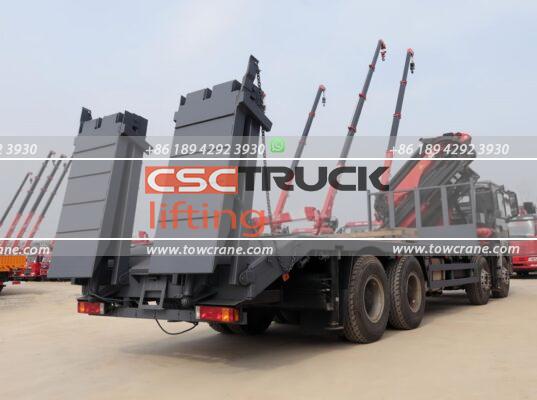
- Communication and Cooperation:
The driver and the rigger must cooperate closely and follow the signals of the commander. Before operating, the horn must be honked first to alert those around. If the command gestures are unclear or wrong, the driver has the right to refuse to execute. During work, the driver must stop immediately when receiving an emergency stop signal from anyone. Only after eliminating unsafe factors can work continue.
例えば, if there is a miscommunication between the driver and the rigger or the commander, it can lead to accidents. By maintaining clear communication and following the correct procedures, the driver can ensure the safety of the operation.
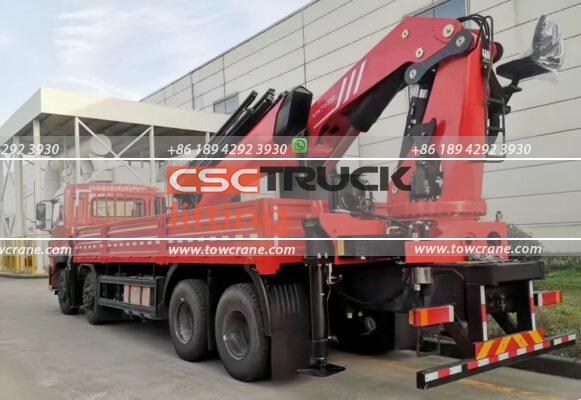
- Riding and Handling Precautions:
It is strictly prohibited for operators to ride up and down with the lifted object. This is extremely dangerous and can lead to serious injury or death. During work, it is prohibited to touch the steel wire rope and pulley with hands as this can cause injuries.
例えば, if an operator attempts to to ride on the lifted object, they are at high risk of falling and being injured. By following these rules, the driver can ensure the safety of the operators.
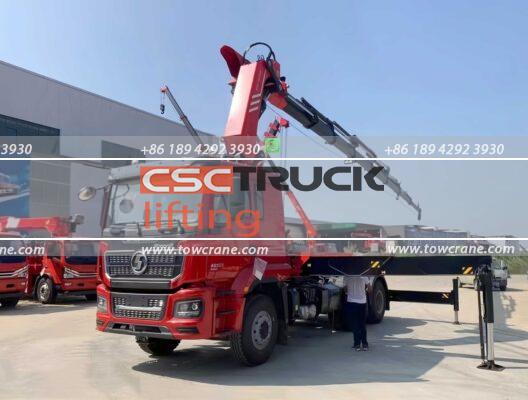
- Suspended Objects and Night Work Lighting:
Whether at work stoppage or rest, the lifted object must not be suspended in the air. This can be dangerous if the load drops unexpectedly. There must be sufficient lighting for night work to ensure safe operations.
例えば, if a load is left suspended overnight, it can pose a risk to those who may pass by. これらのガイドラインに従うことで、, the driver can ensure the safety of the work site.
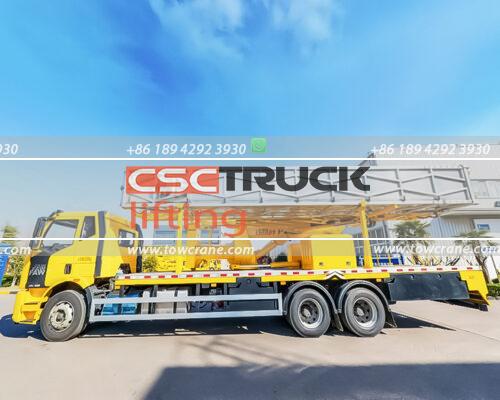
- Emergencies and Adjustments:
In case of situations such as subsidence of outriggers and tilting of the トラック搭載クレーン during operation, the lifted object must be lowered immediately. Only after adjusting and eliminating unsafe factors can operation continue.
例えば, if the outriggers sink or the crane tilts, it is essential to take immediate action to prevent a more serious accident. By following these procedures, the driver can respond quickly to emergencies and ensure safety.
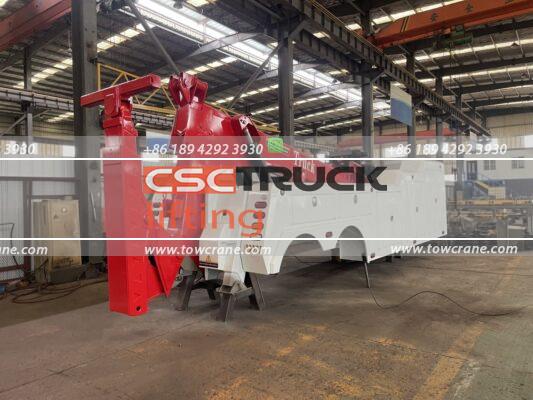
- Post-Operation Procedures:
After operation, the boom of the トラック搭載クレーン should be fully retracted, placed properly, and the hook should be hung up. The brakes of each mechanism must be firmly braked to ensure that the crane is in a safe state.
例えば, leaving the boom extended or the hook unsecured can pose a risk to those around and can cause damage to the crane. By following these post-operation procedures, the driver can ensure the safety and readiness of the crane for future use.
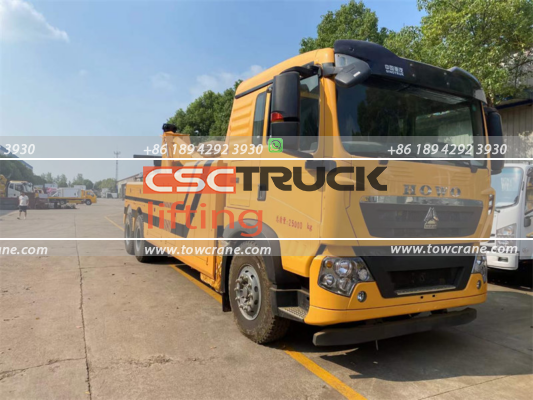
- Adherence to “Ten No-Lifting” Rules:
Strictly abide by the “ten no-lifting” safety regulations for lifting operations. These include no lifting when the command signal is unclear; no lifting when overloaded or the weight of the object is unknown; no lifting when pulling heavy objects obliquely; no lifting when there is insufficient light and the heavy object cannot be seen clearly; no lifting when there are people standing under the heavy object; no lifting when the heavy object is buried underground; no lifting when the heavy object is not firmly fastened, the rope is knotted, and the ropes are not in order; no lifting when there are no padding measures for edged objects; no lifting when the heavy object passes over people’s heads; and no lifting when the safety device malfunctions.
例えば, if any of these conditions are present, lifting the object can lead to serious accidents and damage. By following these rules, the driver can ensure the safety of the lifting operation and protect everyone on the work site.





